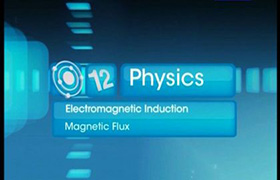JEE Class main Answered
A thin non conducting disc of radius R is rotating clockwisee with an angular velocity w about its central axis,which is perpendicular to its plane.Both its surface carry positive charges of uniform surface density.Half the disc in a region of a uniform ,unidirectional magnetic field B parallel to the plane of the disc as shown in figure.Then
A)Net torque on the disc is zero
B)Net torque vector on the disc is directed leftwards
C)Net torque vector on the disc is directed rightwards
D)Net torque vector on the disc is parallel to B
:Sir plzz..tell me how and which one (Right or Left ,and why )Flemming rule is being applied and its whole explanation please

Asked by vishakhachandan026 | 18 Oct, 2019, 00:13: AM

A charged disc carrying unifom positive surface charge, is rotating in clockwise direction in magnetic field region.
It experiences force and direction of this force is realized using Left hand fleming rule.
Figure shows the direction of forces at opposite points of disc in manetic field region.
Torque of force F with respect to centre of disc is defined as τ = r x F.
Direction of torque is realized by right-hand screw rule used to get the direction of cross product of vectors.
Figure on the right side shows the direction of torque at the opposite points on disc.
It can be see that one torque rotates the disc in anticlockwise, while other torque rotates the disc in clockwise.
Hence net effect is zero or net torque is zero
Answered by Thiyagarajan K | 18 Oct, 2019, 11:40: AM
Application Videos
Concept Videos
JEE main - Physics
Asked by jwjwwj | 16 Jan, 2025, 13:26: PM
JEE main - Physics
Asked by mishradarshan03 | 22 Dec, 2024, 11:45: AM
JEE main - Physics
Asked by sumalathamadarapu9 | 23 Oct, 2024, 22:06: PM
JEE main - Physics
Asked by py309649 | 13 Oct, 2024, 13:39: PM
JEE main - Physics
Asked by coolskrish | 13 Oct, 2024, 12:50: PM
JEE main - Physics
Asked by midnightmoon3355 | 09 Oct, 2024, 09:09: AM
JEE main - Physics
Asked by rambabunaidu4455 | 03 Oct, 2024, 16:03: PM
JEE main - Physics
Asked by ratchanavalli07 | 17 Sep, 2024, 07:46: AM
JEE main - Physics
Asked by yayashvadutta45 | 15 Sep, 2024, 19:47: PM
JEE main - Physics
Asked by adithireddy999 | 03 Sep, 2024, 09:35: AM










